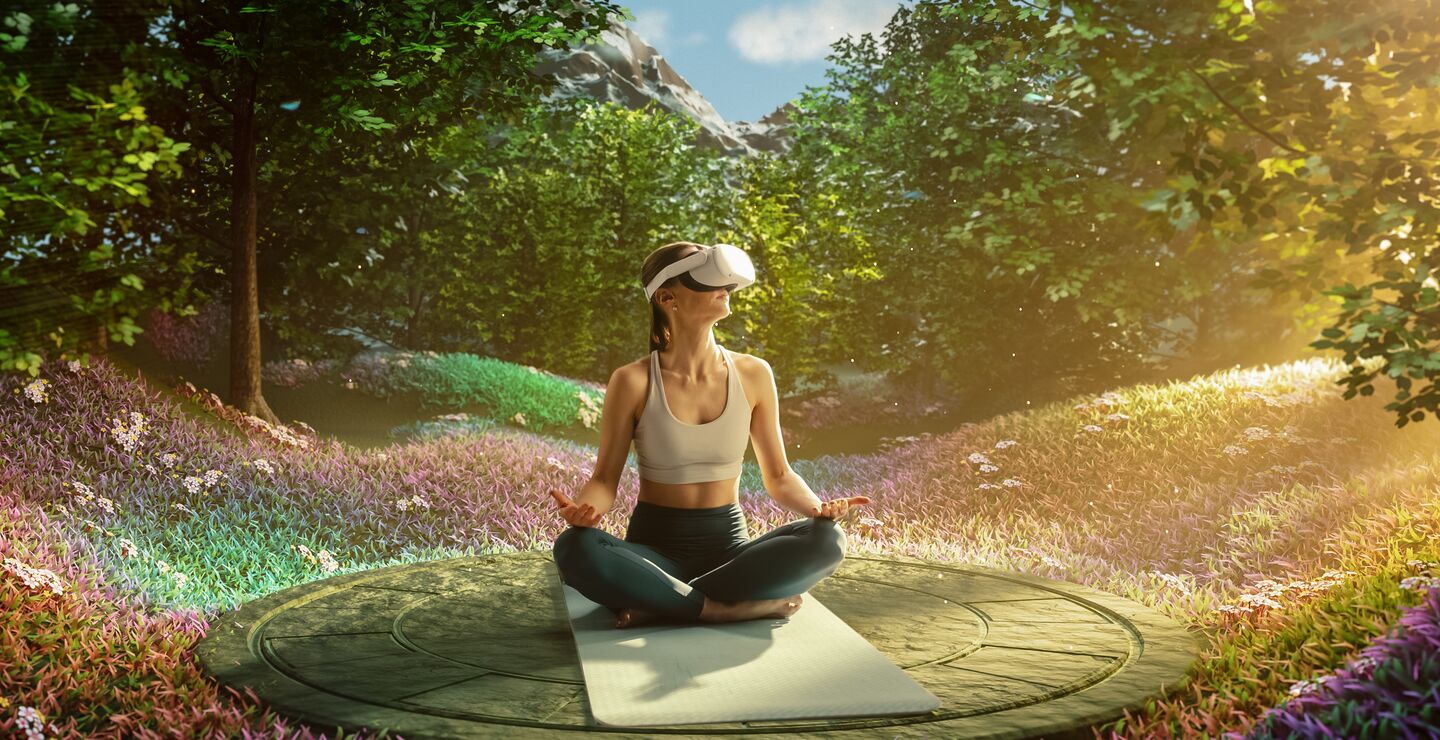In a world saturated with visual content and digital noise, designing for the full human sensorium may be the key to building experiences that truly resonate.

From smelling adverts to synaesthetic dining: designing with the senses
Carlos Velasco, Marianna Obrist
From scented billboards, through taste-enhanced music, to sensory-enabling immersive technologies, companies across sectors are discovering that experiences crafted for multiple senses resonate more deeply with consumers.
In the book “Multisensory Experiences: Where the Senses Meet Technology”, we we explore how multisensory experience design is becoming a critical capability for businesses seeking to innovate in retail, hospitality, marketing, and beyond.
McDonald’s scented billboards in the Netherlands
McDonald’s recently ran a minimalist outdoor campaign in the Netherlands that relied solely on colour and smell. Passers-by encountered plain red-and-yellow billboards that, when approached, released the distinctive aroma of McDonald’s French fries. There was no text, no image, no logo, just the brand’s characteristic colour and scent.
This campaign used smell as a trigger for memory, emotion, and brand recognition. It capitalised on the fact that smell is neurologically connected to the brain’s memory and emotional centres, making it one of the most powerful yet underutilised tools in marketing.
A Multisensory dining experience in Mumbai
One of the clearest illustrations of this trend is the multicourse dining experience Awaken Your Senses, co-developed at the Centre for Multisensory Marketing (BI Norwegian Business School) and Chef Pablo Naranjo at Le15 Café in Mumbai. This event was structured around the principle that each sense could be deliberately activated to deepen the dining experience.
One standout dish, Synaesthesia, featured oak-smoked salmon ceviche with coriander and coconut milk. But the dish’s most unusual element was not on the plate, it was in the air. Prior to serving, saxophonist Ryan Sadri was invited to taste the dish and compose a musical piece inspired by its textures and aromas. This music was played live as the dish was served. The result was not merely auditory accompaniment but a multisensory fusion, reported by diners as intensifying both flavour perception and emotional engagement.
This example demonstrates the principles of multisensory experience design: intentional selection and orchestration of sensory cues to shape perception. But it also raises questions about authorship and authenticity, if flavour can be “seasoned” with sound, then who or what is the real creator of the experience?
Why this matters for business
Multisensory experience design should not be regarded as a passing trend but as a substantive shift in how organisations conceptualise and structure customer engagement. By systematically integrating different senses into design processes, businesses are expanding the scope of what constitutes a brand, service, or product experience.
This approach entails moving beyond predominantly visual and verbal forms of communication to engage individuals in more embodied and affective ways. Across sectors, including retail, tourism, healthcare, and education—multisensory strategies are beginning to demonstrate both commercial value and cultural significance.
Here are 5 actionable insights for organisations across sectors:
- Retail. Incorporate curated soundscapes, scents, and tactile elements to drive engagement, dwell time, and emotional connection. Research shows that congruent sensory cues can enhance purchase intent and strengthen brand recall. Brands such as Abercrombie & Fitch have long used signature scents diffused throughout their stores to create distinctive, mood-setting environments that reinforce brand identity and influence consumer behaviour.
- Food & beverage. Use multisensory design, such as music, plating aesthetics, and scent, to enhance taste perception and storytelling. A well-orchestrated sensory experience can elevate customer satisfaction and support premium positioning, as illustrated by dining concepts like Awaken Your Senses, which integrated live music to complement and intensify flavour experiences.
- Marketing and advertising. Leverage underutilised sensory channels, such as scent, texture, and auditory branding, to create more memorable and emotionally resonant brand associations. As seen in recent campaign by McDonald’s, sensory cues can effectively trigger recognition, emotion, and behavioural response even in the absence of traditional visual messaging.
- Hospitality. Design immersive, sensorial environments that contribute to a coherent brand experience, from lighting and bedding to ambient sound. Hotels and airlines are increasingly adopting these strategies to build differentiation and loyalty. Finnair, for instance, developed the Hear the Taste initiative, pairing in-flight meals with curated soundscapes to enhance flavour perception and elevate the overall dining experience.
- Digital integration. Leverage emerging interfaces in virtual and augmented reality (VR/AR) that incorporate olfactory, haptic, and thermal feedback to simulate smell, texture, and temperature. These technologies allow brands to translate and extend physical experiences into immersive digital environments, enhancing emotional engagement, presence, and sensory realism. FarFalla, a project developed by the Textile Circularity Centre in the UK, used VR, scent, and digital fabric touch to immerse users in a future textile hub where they could repair and customise garments with bio-based materials. This kind of experience demonstrates how sensory storytelling can activate consumer participation in circular economy initiatives.
The technological horizon
We are witnessing a major shift in how human experiences are designed, moving from the physical world (reality), through blended environments (mixed reality), and increasingly toward entirely digital settings (virtuality). This spectrum is known as the reality–virtuality continuum, and along it, our sensory experiences are being reshaped by new technologies that extend far beyond traditional screens and speakers.
An intriguing example is TREE VR, an award-winning installation that lets participants embody a Kapok tree in the Amazon rainforest. Developed by New Reality Co. with the Rainforest Alliance, the experience combines a virtual reality (VR) headset, scent emitters, vibration feedback (through a wearable device), and ambient temperature changes to simulate the tree’s life, from growth to deforestation.
Users not only see and hear the forest, but also feel wind, vibrations, and smell soil, leaves, and smoke. The goal is to evoke empathy for environmental degradation by turning climate change into something felt, not just understood. TREE has been exhibited globally, including at TED, the World Economic Forum, and Sundance.
From information design to perception design
Technologies enabling such experiences are advancing rapidly. Generative AI (e.g. ChatGPT, DALL·E) can now create personalised multisensory content on demand, including images, music, or narrative dialogue based on user input or context.
Web3.0, a decentralised, blockchain-based version of the internet, is powering shared virtual spaces (e.g. virtual art galleries or immersive retail environments) where users can co-create and co-own content. Meanwhile, human–computer integration technologies, such as brain–computer interfaces (e.g. Neuralink) and wearable haptics, are enabling more seamless communication between the body and digital systems (for example, touch-sensitive gloves that allow users to feel virtual textures).
These experience-related transformative technologies are not only enhancing realism in digital environments but also redefining how experiences are created, distributed, and monetised. Importantly, they raise new questions about ethics, accessibility, and control. Who designs and curates these sensory environments? How do we ensure inclusion and avoid sensory manipulation?
As we move further along the reality–virtuality continuum, the focus is shifting from designing information to designing perception. For businesses, this opens powerful opportunities to shape engagement, but also demands a deeper responsibility for how those experiences are felt and interpreted.
Published 25. April 2025

